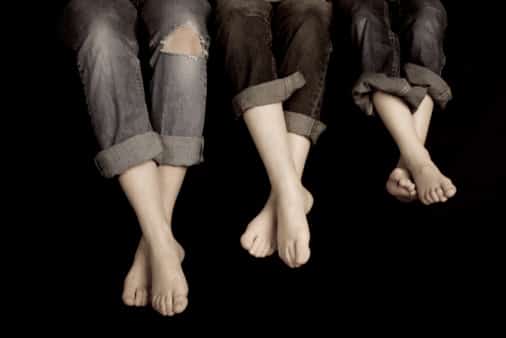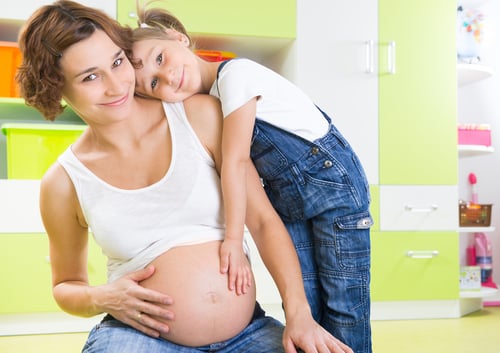Tocophobia: The Fear Of Childbirth — Pretty Understandable
 Childbirth is universally acknowledged as a painful experience, yet for some women the fear of childbirth exceeds that of mere jitters and nervousness. Tocophobia (or tokophobia) has been receiving quite a bit of press now as the phobia of giving birth, triggered by a traumatic birth, a graphic yet standard health class video, or an explicit description of a friend or relative’s birthing experiences. But considering the increasing risks faced by birthing women in this country, the phobia seems rooted in a legitimate fear.
Childbirth is universally acknowledged as a painful experience, yet for some women the fear of childbirth exceeds that of mere jitters and nervousness. Tocophobia (or tokophobia) has been receiving quite a bit of press now as the phobia of giving birth, triggered by a traumatic birth, a graphic yet standard health class video, or an explicit description of a friend or relative’s birthing experiences. But considering the increasing risks faced by birthing women in this country, the phobia seems rooted in a legitimate fear.
Some women’s tocophobia manifests after a traumatic birth, known as secondary tocophobia, primary tocophobia is evident in women who have never given birth and adamantly plan not to. For primary tocophobia sufferers, a preoccupation with the pain, blood, and potential health risks of such an experience leaves them terrified of labor. For these same women, the fear can originate in early girlhood or pre-teenage years. Tocophobia has also been observed in women who have suffered from eating disorders and sexual abuse.
Oscar-winning actress Helen Mirren most famously explained her decision to never give birth after watching a video of childbirth at 13 years old in convent school.
“‘I swear it traumatized me to this day,” Mirren told Andrew Denton, an Australian television interviewer in 2007. “I haven’t had children and now I can’t look at anything to do with childbirth. It absolutely disgusts me.”
”Disgust” with childbirth however does not necessarily indicate a disinterest in having children, as some, such as Karen DuVall, a tocophobic 23-year-old college student, told ABCNews that she plans to adopt children with her future husband.
From what is currently known about the phobia however, the majority of women diagnosed have endured a traumatic birth the first time around. In the United Kingdom, as many as one in six women suffers from secondary tocophobia, citing a horrendous first birth as well. According to The Guardian, the Liverpool Women’s Hospital reported in 2010 a 40 percent increase in women asking for an elective cesarean because of trauma suffered in their last experience.
Although a 2000 issue of the British Journal of Psychiatry described tocophobia as a ”harrowing condition,” some experts in the field are chalking tocophobia up to women’s mere intolerance of pain.
“A lot of women are less tolerant of pain now. They should realize that childbirth is painful,” Dr. Tracey Johnstone, a consultant in fetal maternal medicine at Birmingham Women’s hospital, told The Guardian.
But an intensely painful childbirth doesn’t necessarily contribute to a traumatic birth, as the Birth Trauma Association in the UK writes that, ”it is not always the sensational or dramatic events that trigger childbirth trauma but other factors such as loss of control, loss of dignity, the hostile or difficult attitudes of the people around them, feelings of not being heard or the absence of informed consent to medical procedures.”
One mother who spoke to me about her birth trauma in England described the swirling decisions being made around her at the time of her labor as one of the most prominent factors in her fear. After heading to the hospital, Michelle K-G was told by her anesthetist that her ”cutting” pains were contractions, not labor pains. She was not given an epidural, but when asked to sit down on the hospital bed realized that she could not because she could feel ”something hard” between her legs the baby’s head.
“The midwife assured me it couldn’t happen that quickly and had a look just to check, but yes… it was the head,” Michelle remembers. ” ‘Ok, she said, we’re going to do this without pain relief…’ Those words will haunt me forever. I was so completely unprepared, mentally, for a pain-relief-free birth that I just remember thinking, this is how I am going to die. In childbirth. The pain was so unbelievably excruciating. I was screaming, howling, pushing, feeling like I was literally going to be split in half.”
”Unprepared” for the birthing decisions that were essentially made for her, Michelle’s pain exceeded anything that she had ever imagined. And considering 30 percent of women in England and Wales (about 200,000 women a year) show trauma symptoms after giving birth, the question of women’s pain tolerance is complicated by a larger one: how much are women being listened to at the time of labor?
“An awful lot of women in Britain suffer birth trauma and lack of care explains the high prevalence,” Maureen Treadwell, a spokesperson for Birth Trauma Association told The Guardian. “Some women have a quite horrific experience of childbirth and often feel they weren’t listened to because they had a baby who was well. Given the lack of care it’s no wonder 30 percent find it traumatic.”
Even here in the Unites States, the risks of childbirth seem to climb every year, with maternal deaths documented as being ”on the rise” in 2007 primarily due to the increase in C-sections and obesity. As of 2010, one-third of American women suffered from pregnancy related complications (about 1.7 million women), with maternal deaths doubling in the past 20 years.
As I always understood it, a ”phobia” indicated an irrationally intense fear. But given the status of maternal care, both here and abroad, and the escalating dangers of childbirth, tocophobia seems like a very reasoned reaction to a pretty consistent reality for many women.
(Photo: nagobe)






